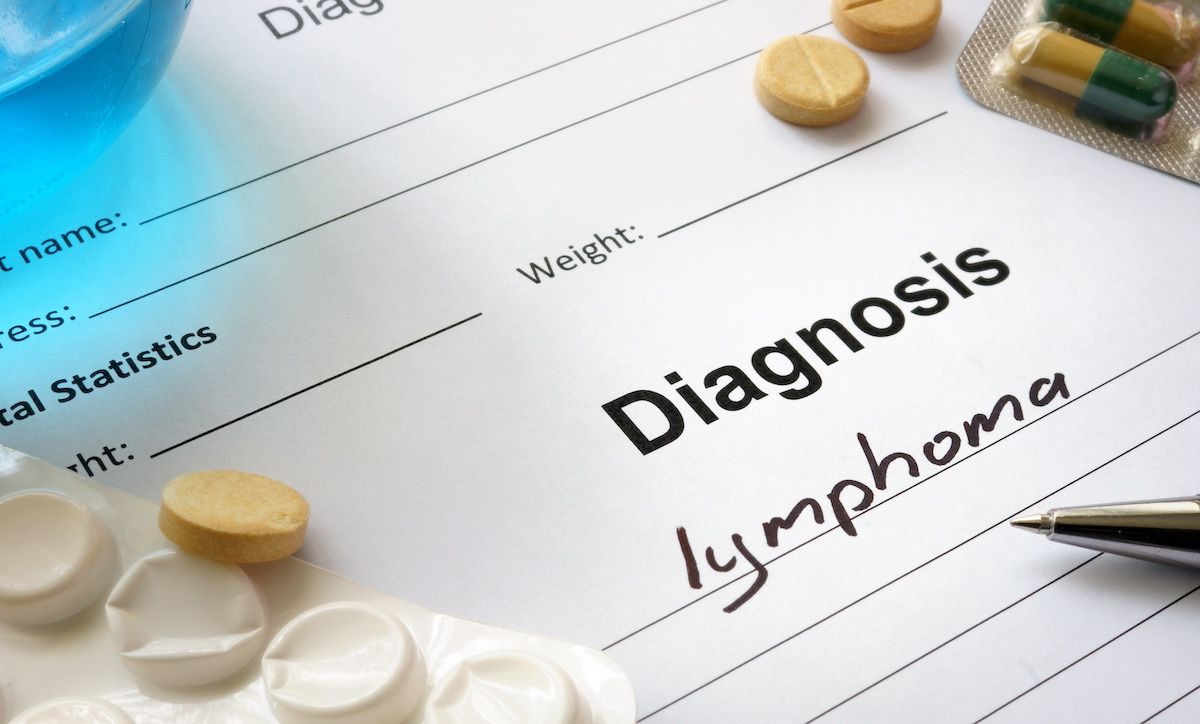- Center on Health Equity & Access
- Clinical
- Health Care Cost
- Health Care Delivery
- Insurance
- Policy
- Technology
- Value-Based Care
Scant Infection Data for Patients With R/R MM, NHL Treated With BsAbs
Better reporting is needed to create better guidelines for tracking infection risk in patients with relapsed or refractory non-Hodgkin lymphoma or multiple myeloma, investigators concluded.
Bispecific antibodies (BsAbs) offer significant benefits to patients with relapsed or refractory (R/R) B-cell non-Hodgkin lymphomas and multiple myeloma, but a new report highlights a lack of comprehensive data on the infection risk associated with the therapies.
The current lack of comprehensive data reflects an urgent need for more robust data and reporting with regard to BsAbs in R/R non-Hodgkin lymphoma and multiple myeloma. | Image credit: Vitalii Vodolazskyi - stock.adobe.com

In a research letter published in the British Journal of Haematology, Muhammad Bilal Abid, MD, of the University of Texas McGovern School of Medicine, and colleagues, noted that BsAbs have demonstrated strong efficacy in patients with R/R hematological malignancies.1 In addition, they said, BsAbs are more convenient than alternatives like chimeric antigen receptor (CAR) T-cell therapy, because they can be administered in an outpatient setting in an “off-the-shelf” manner.
Yet, the outpatient nature of BsAb therapy and its frequent use alongside corticosteroid pre-dosing also create a need for better data about the risk of infections, the investigators said. In particular, Abid and colleagues said, while real-world data about the infection risk associated with BsAbs among patients with R/R multiple myeloma has emerged, the same is not true in non-Hodgkin lymphoma.
In the absence of more comprehensive data, they said management of immune-related toxicities in patients with BsAbs “mirrors” algorithms created for patients receiving CAR T-cell therapy. However, they said differences in the constructs of the therapies and the timing and severity of toxicities suggest a need for BsAb-specific guidelines.
Most of the published data surrounding BsAb infection risk comes from clinical trials. The clinical trials for multiple myeloma–indicated BsAbs—teclistamab (Tecvayli), elranatamab (Elrexfio), and talquetamab (Talvey)—all cited a significant risk of infections, but Abid and colleagues said the studies used different reporting metrics. For instance, the MajesTEC-1 trial of teclistamab only reported adverse events if they had a frequency of at least 10%, they noted. In that study, three-quarters of patients were diagnosed with an infection, including pneumonia and COVID-19.2 The MonumenTAL-1 trial of talquetamab had lower rates of infections, though they only reported grade 3 or 4 infections, Abid and colleagues said.3
Existing real-world evidence—though limited—has somewhat lower infection rates. One reason, the authors said, could be differences between the general patient population and the trial population. In addition, there were varying follow-up periods between the trials and real-world studies, they said. Another complicating factor is the pivotal trials of the multiple myeloma therapies were conducted during the height of the COVID-19 pandemic, which may have heightened infection risk.
A systematic review of infectious complications in patients with R/R multiple myeloma treated with BSabs yielded a cumulative rate of infections of 56%, and a prevalence of grade 3 or above infections of 24%, Abid and colleagues noted.4
In non-Hodgkin lymphoma, Abid and colleagues said the trials of 4 CD20-targeting BsAbs used to treat patients with R/R NHL (though approved for different indications) had infection rates ranging from 20% for monsunetuzumab (Lunsumio; approved for follicular lymphoma) to 49% for odronextamab (FDA approval is pending).5,6 Respiratory infections were particularly common, the authors said.
There are no real-world studies regarding BsAbs in patients with R/R non-Hodgkin lymphoma, the authors said, though they noted a pooled analysis of single-agent BsAb clinical trials in non-Hodgkin lymphoma suggested a 40% prevalence of infections and a 17% prevalence of grade 3 or above infections.1
Abid and colleagues said the current lack of comprehensive data reflects an urgent need for more robust data and reporting with regard to BsAbs in R/R non-Hodgkin lymphoma and multiple myeloma.
“Broader deployment of BsAbs holds the potential to curb access barriers, prolong lives, and improve outcomes homogeneously,” they concluded. “However, an escalated risk for infections in this patient cohort with a high rate of immunosuppression requires vigilant monitoring and protocolized surveillance and management strategies.”
References
- Gonugunta AS, Mohlere V, Abid MB. Risk of infections with bispecific antibodies in B-cell non-Hodgkin lymphomas and multiple myeloma-the current state. Br J Haematol. Published online July 9, 2024. doi:10.1111/bjh.19633
- Moreau P, Garfall AL, van de Donk NWCJ, et al. Teclistamab in relapsed or refractory multiple myeloma. N Engl J Med. 2022;387(6):495-505. doi:10.1056/NEJMoa2203478
- Chari A, Minnema MC, Berdeja JG, et al. Talquetamab, a T-cell-redirecting GPRC5D bispecific antibody for multiple myeloma. N Engl J Med. 2022;387(24):2232-2244. doi:10.1056/NEJMoa2204591
- Reynolds G, Cliff ERS, Mohyuddin GR, et al. Infections following bispecific antibodies in myeloma: a systematic review and meta-analysis. Blood Adv. 2023;7(19):5898-5903. doi:10.1182/bloodadvances.2023010539
- Budde LE, Sehn LH, Matasar M, et al. Safety and efficacy of mosunetuzumab, a bispecific antibody, in patients with relapsed or refractory follicular lymphoma: a single-arm, multicentre, phase 2 study. Lancet Oncol. 2022;23(8):1055-1065. doi:10.1016/S1470-2045(22)00335-7
- Bannerji R, Arnason JE, Advani RH, et al. Odronextamab, a human CD20×CD3 bispecific antibody in patients with CD20-positive B-cell malignancies (ELM-1): results from the relapsed or refractory non-Hodgkin lymphoma cohort in a single-arm, multicentre, phase 1 trial. Lancet Haematol. 2022;9(5):e327-e339. doi:10.1016/S2352-3026(22)00072-2
